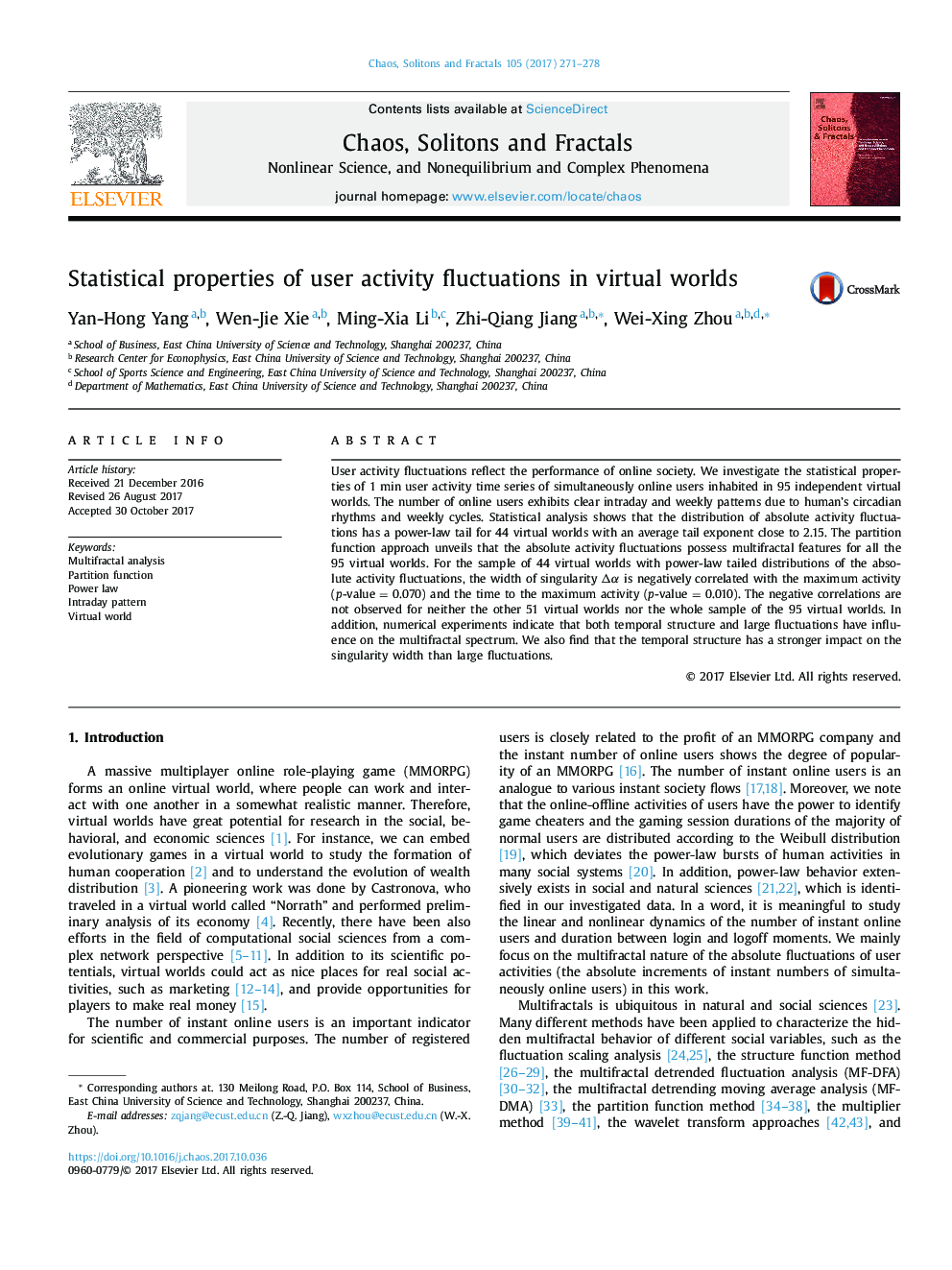| Article ID | Journal | Published Year | Pages | File Type |
|---|---|---|---|---|
| 8254351 | Chaos, Solitons & Fractals | 2017 | 8 Pages |
Abstract
User activity fluctuations reflect the performance of online society. We investigate the statistical properties of 1 min user activity time series of simultaneously online users inhabited in 95 independent virtual worlds. The number of online users exhibits clear intraday and weekly patterns due to human's circadian rhythms and weekly cycles. Statistical analysis shows that the distribution of absolute activity fluctuations has a power-law tail for 44 virtual worlds with an average tail exponent close to 2.15. The partition function approach unveils that the absolute activity fluctuations possess multifractal features for all the 95 virtual worlds. For the sample of 44 virtual worlds with power-law tailed distributions of the absolute activity fluctuations, the width of singularity Îα is negatively correlated with the maximum activity (p-value = 0.070) and the time to the maximum activity (p-value = 0.010). The negative correlations are not observed for neither the other 51 virtual worlds nor the whole sample of the 95 virtual worlds. In addition, numerical experiments indicate that both temporal structure and large fluctuations have influence on the multifractal spectrum. We also find that the temporal structure has a stronger impact on the singularity width than large fluctuations.
Related Topics
Physical Sciences and Engineering
Physics and Astronomy
Statistical and Nonlinear Physics
Authors
Yan-Hong Yang, Wen-Jie Xie, Ming-Xia Li, Zhi-Qiang Jiang, Wei-Xing Zhou,
